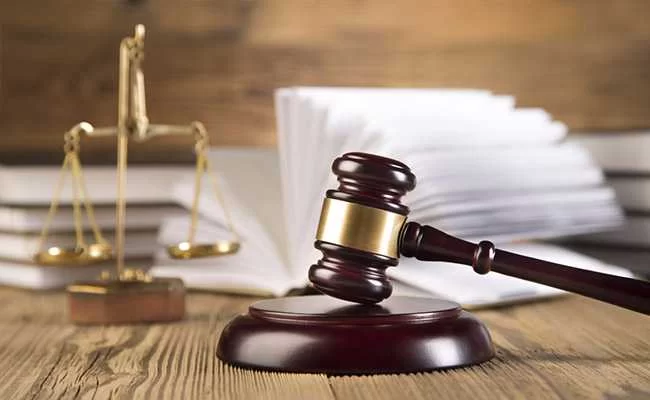
- Understanding Collateral Reclamation in Insolvency
- Legal Framework for Reclaiming Collateral
- Practical Steps Creditors Should Follow
- Challenges in Collateral Repossession and How to Navigate Them
- Case Example and Insights
- Why Consult ESPLawyers for Insolvency Cases
1. Understanding Collateral Reclamation in Insolvency
Reclaiming collateral in insolvency cases is a critical concern for creditors seeking to minimize losses when a debtor becomes insolvent. Collateral, which may include physical assets like equipment, vehicles, or property, serves as security for a loan or credit. When insolvency occurs, creditors face the complex task of recovering this collateral amidst competing claims and legal restrictions.
It’s important to understand that insolvency triggers a legal process where the debtor’s assets are gathered and distributed under court supervision or through appointed insolvency practitioners. This environment complicates direct repossession of collateral and demands a strategic and legally compliant approach.
1.1 The Role of Secured Creditors
Creditors holding secured interests in collateral generally have priority over unsecured creditors. This secured status allows them to reclaim or realize value from the collateral more readily, but only if the legal steps are properly followed. Being a secured creditor is an advantage, but it comes with strict procedural obligations.
1.2 Distinguishing Between Types of Collateral
Not all collateral is created equal. Fixed assets, inventory, and receivables might each be treated differently under insolvency law. Knowing the nature of the collateral helps shape an effective recovery strategy.
2. Legal Framework for Reclaiming Collateral
The process of reclaiming collateral in insolvency is governed by specific laws designed to balance creditor rights and debtor protections. These laws vary by jurisdiction but often include provisions such as:
2.1 Automatic Stay and Its Implications
Most insolvency laws impose an automatic stay that halts creditor actions against the debtor’s assets once insolvency proceedings start. This means that reclaiming collateral cannot proceed unilaterally and requires court approval or liquidator consent.
2.2 Enforcement Rights of Secured Creditors
Secured creditors typically retain the right to enforce their security interests, but this is subject to the insolvency process. Legal frameworks specify how and when these rights can be exercised, including timelines and notification requirements.
2.3 Impact of Insolvency Practitioners and Liquidators
Insolvency practitioners play a central role in managing assets, including collateral. They may facilitate or contest repossession depending on the circumstances, emphasizing the need for creditor cooperation and legal compliance.
3. Practical Steps Creditors Should Follow
Successfully reclaiming collateral in insolvency cases involves clear, methodical actions aligned with legal standards and practical realities.
3.1 Confirm Secured Status and Documentation
Creditors must first ensure their security interests are properly registered and documented. This verification prevents disputes and strengthens claims during insolvency.
3.2 Engage Early with Insolvency Practitioners
Building a cooperative relationship with the liquidator or insolvency practitioner can streamline the recovery process. Early engagement helps clarify procedures and possible timelines.
3.3 File Claims and Requests Promptly
Timely submission of claims and any repossession requests is vital. Missing deadlines or failing to meet legal criteria can forfeit rights to collateral.
3.4 Explore Negotiation and Settlement Options
Sometimes, negotiating with the insolvency practitioner or debtor can yield better outcomes than forced repossession, such as agreeing on asset sales or partial payments.
4. Challenges in Collateral Repossession and How to Navigate Them
Reclaiming collateral in insolvency cases is fraught with difficulties that require careful handling.
4.1 Competing Creditor Claims
Multiple creditors may claim interests over the same assets, complicating recovery. Clear priority rights and legal guidance help manage these conflicts.
4.2 Legal Restrictions and Delays
Insolvency laws protect debtors from immediate asset seizure, which can delay repossession efforts. Patience and strategic legal action become crucial.
4.3 Asset Depreciation and Value Loss
Delays in reclaiming collateral can result in asset depreciation or damage, reducing potential recovery value. Prompt action mitigates this risk.
5. Case Example and Insights
A commercial lender recently faced the challenge of reclaiming heavy machinery used as collateral after the borrower entered insolvency. By promptly verifying secured status and engaging with the appointed liquidator, the lender successfully negotiated the sale of equipment, securing a significant portion of the outstanding debt. This case illustrates how timely, informed actions and cooperative strategies are vital in collateral recovery during insolvency.
In contrast, creditors who delayed engagement or lacked proper documentation often recovered little or nothing, highlighting the stakes involved in understanding and managing this process.
6. Why Consult ESPLawyers for Insolvency Cases
Reclaiming collateral in insolvency cases demands specialized knowledge and experience. ESPLawyers provide expert legal support tailored to creditor needs, helping navigate complex insolvency laws, enforce security interests, and maximize recovery.
Whether you are a first-time creditor facing insolvency challenges or dealing with complex collateral disputes, ESPLawyers offers practical, trustworthy guidance to protect your rights and assets effectively.
For anyone involved in insolvency proceedings, understanding how to reclaim collateral and having professional support can make the difference between significant loss and successful recovery. ESPLawyers is your reliable partner in these challenging matters.








